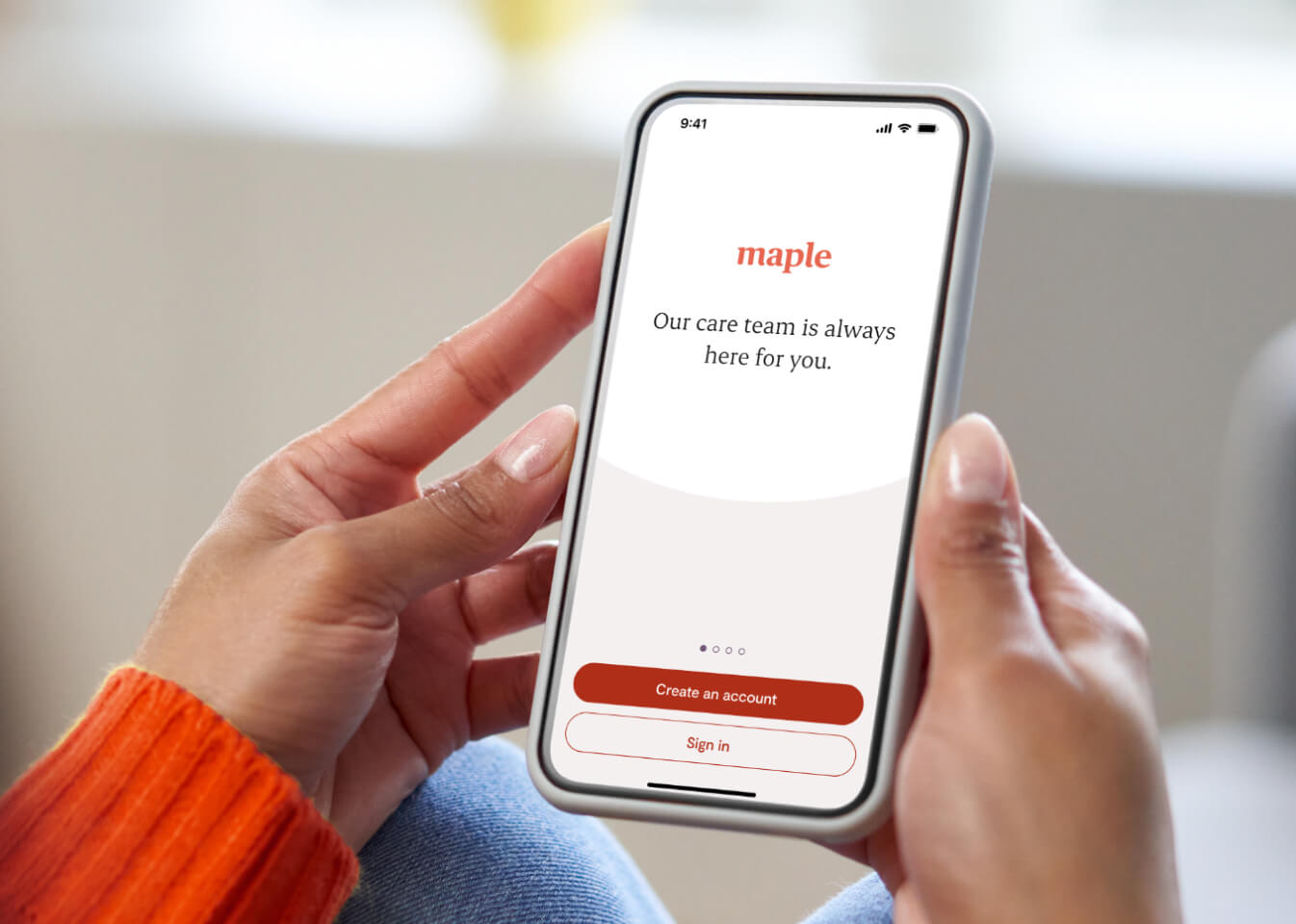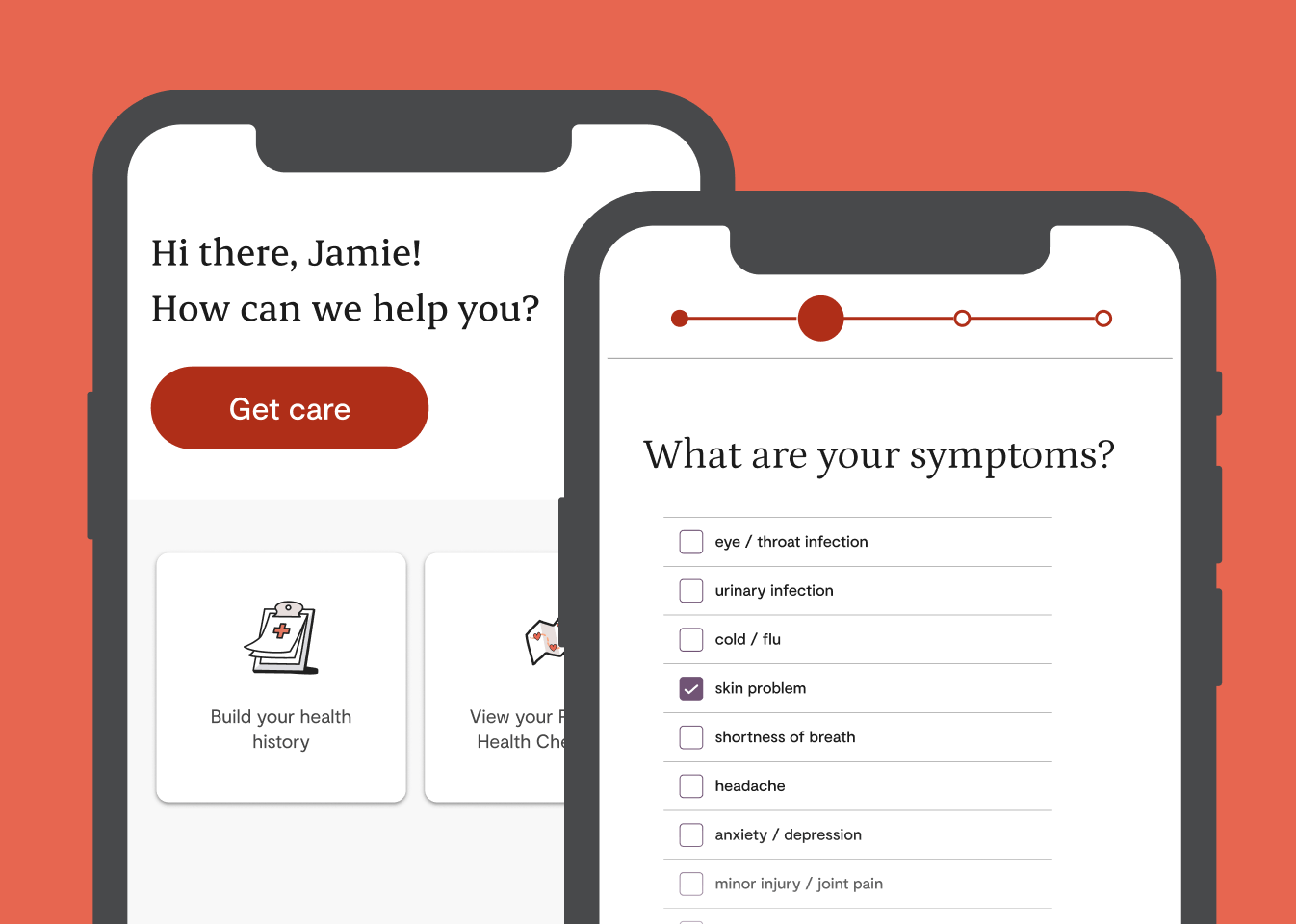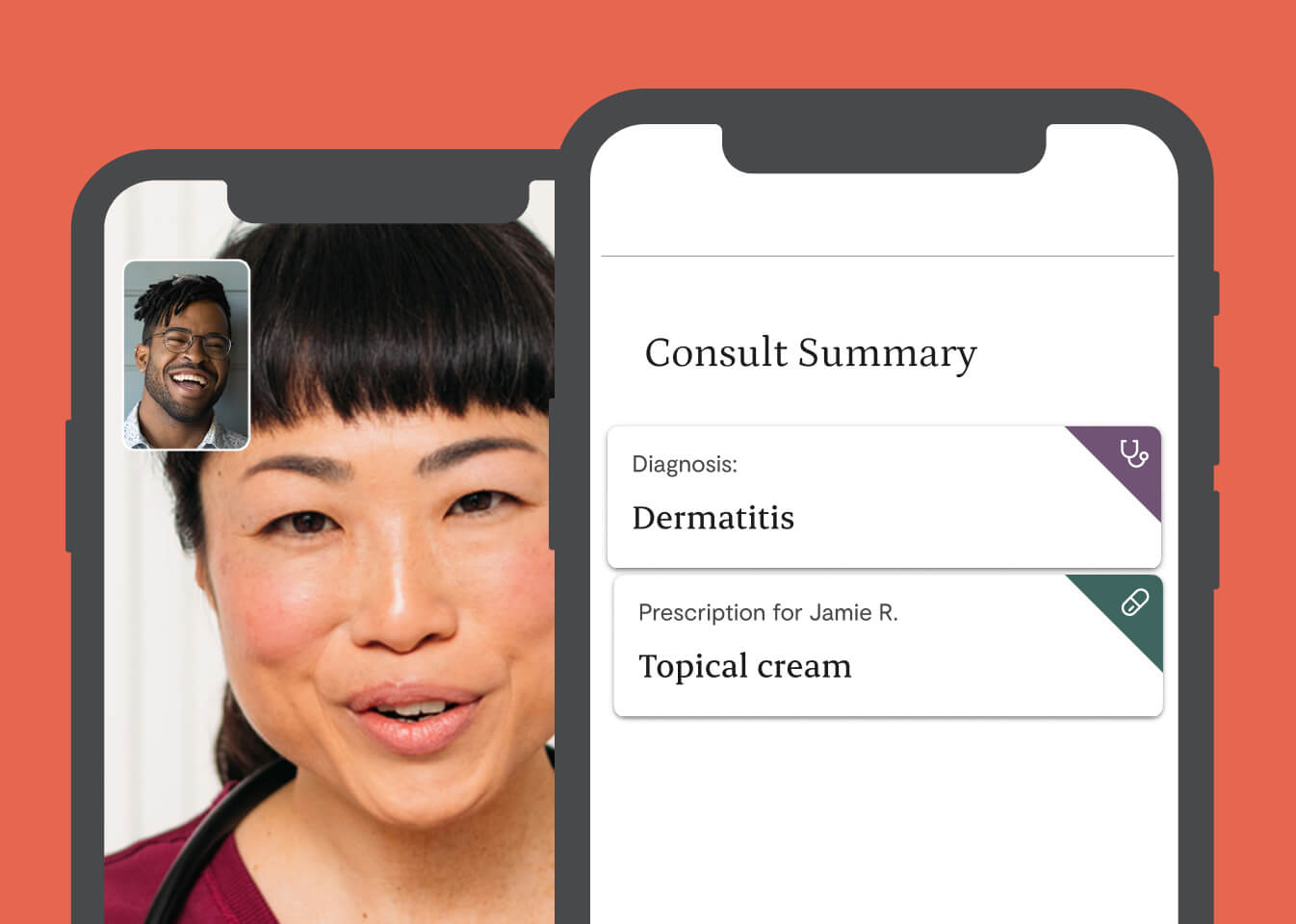Bladder infection treatment, diagnosis & prescriptions
Skip the waiting room! Instantly connect with Canadian doctors for medical care from your phone, tablet or computer - any time, 24/7.

- Prescriptions available at a provider's discretion
- Speak to a doctor or nurse practitioner
- 24/7 availability
- Get connected in minutes
Trusted by millions of Canadians
- 4.8 rating30K+ App Store reviews
- 4.7 score8K+ Trustpilot reviews
Talk to a doctor about bladder infection treatment online
See a doctor or nurse practitioner today to get a new prescription or refill, at their discretion.
See a provider in three easy steps.
- 1
Register and become a member

- 2
Select the “Get care” button on our homepage

- 3
Connect with a Canadian-licensed doctor or nurse practitioner in minutes

Why Canadians love Maple
A fantastic way to get medical advice when you are unable to see someone in person. The app is so simple to use. Highly recommend. I am not a tech savvy person but the doctor was kind enough to patiently walk me through every step of the process. Thank you.
Saved me hours waiting in the ER.
Fast and effective tool for getting a diagnosis and prescription.
The doctor willingly took the time to explain things to me.
Very easy to book a therapist and get appointment receipts.
Frequently asked questions
About Bladder Infection
Yes. In most cases, a doctor will be able to diagnose your bladder infection by discussing your symptoms. Once the doctor has done an evaluation, they will be able to offer a diagnosis and recommend an appropriate course of treatments, with any necessary prescriptions for bladder infection medications.
If the doctor suspects there could be a more serious underlying cause for your bladder infection, they may suggest that you go to a medical clinic for a physical exam or further testing to determine the cause of the bladder infection.
Yes, our physicians can prescribe medications online during your consultation. Once you accept a prescription, you’ll have the option to pick it up from any pharmacy or to have it delivered right to your door at no additional cost.
You can visit our How it Works page to learn more.
A bladder infection occurs when bacteria gets into the urethra (the tube from which urine exits the body), and then travels back up into the bladder.
Once it’s reached the bladder, bacteria attach to the walls of the bladder where they quickly multiply, preventing the body’s natural defences from fighting off the infection.
This is the most common form of urinary tract infection (UTI).
Bladder infection symptoms include:
- Increased urination frequency
- Pain or burning while urinating
- Cloudy or bloody urine
- Feeling as though you constantly have to urinate
- Foul smelling urine
- Pressure or cramping in the lower back or abdomen
The most frequent bladder infection causes are bacteria (usually E. coli) getting passed into the urethra to the bladder, where they multiply and create an infection.
Not urinating after sexual intercourse or wiping back to front, where particles of stool containing harmful bacteria are accidentally passed into the urethra, are two of the most common infection methods.
Bladder infection in men occurs far less often than women. This is because the urethra is much shorter in women, making it easier for bacteria to make it into the bladder.
However, if bladder infections symptoms in women re-occur frequently (more than three times in a year), or happen repeatedly in men or children, there could be an underlying issue other than bacterial transmission.
Typically, a doctor will be able to offer a diagnosis based on the bladder infection symptoms you’re experiencing or through a physical examination.
If the doctor believes there could be underlying bladder infection causes outside of the usual contamination sources, they may request additional testing including:
- Imaging (ultrasound, MRI or CT scan)
- Retrograde urethrography (using dye to determine issues with the urethra)
- Intravenous urogram (using dye to take images of the kidneys, bladder and ureters
- Cystoscopy (using a thin tube camera to look into the urethra)
- Voiding cystourethrography (using dye in the bladder to see if any urine is flowing backwards into your kidneys)
Bladder infection treatment will vary depending on the severity of the infection.
Mild bladder infections will usually go away on their own, within a few days. More serious infections may require bladder infection antibiotics.
Urinary tract infections (UTIs) are a family of infections covering the bladder, kidneys, urethra and ureters. Some of these infections in other areas cause similar problems to bladder infection symptoms, which is why your doctor may recommend additional testing if they aren’t certain of the specific source of your issues.
Bladder infections are the most common form of UTI, especially in women.
Maple 101
Maple is a virtual care platform that connects you with doctors and other healthcare providers via text, audio, or video. After you log in to your Maple account, you can request an online consultation.
Consultations work similarly to in-person appointments — the doctor can complete an assessment by asking questions about your symptoms, going through your health history, and determining what treatment is right for you. If they think your condition is more serious, they may tell you to go to a clinic for an in-person examination.
As a Maple member, you get 24/7 access to virtual primary care online and more. You can connect with our network of providers via text, audio, or video call within minutes.
Pricing and Payment
Our membership costs $85/month and covers virtual care for patients and their families, including the primary account holder's spouse and any dependents.
For patients in eligible provinces, our membership includes:
- Access to daily primary care provider visits: One daily visit with a primary care provider for each family member in their household.
- Paediatric care: Covered paediatric primary care visits, available by appointment.
- Second medical opinions: access to a network of experts for a second opinion if diagnosed with a complex condition (e.g. cancer).
- Personal Health Check-Ins: A series of personalized, evidence-based proactive care screenings to maintain and improve health.
- iCBT courses: Access to iCBT (internet-based cognitive behavioural therapy) self-assessment and courses.
- Access to specialists in eligible provinces: Easy access to specialists on Maple within days, not months. No referral is needed.
- Specialist referrals in eligible provinces: Ability to be referred to a physician specialist for in-person care, if needed.
- Credit discounts: An $80 credit per month to be applied to a Maple specialist visit.
Please note that our membership cannot be combined with other offerings, such as private insurance coverage and provincial programs, where available. In some cases, membership fees can be covered by a Healthcare Spending Account (HSA) — check with your HSA provider for more details.
We accept all major credit cards, including AMEX cards, as well as Google and Apple Pay.
Security and Privacy
At Maple, we proudly prioritize privacy as a cornerstone of our virtual care services. We strictly adhere to privacy and healthcare legislation in Canada, such as PIPEDA and PHIPA regulations, to ensure patients' personal and health information remains completely private and safeguarded.
Our policies and consent processes are designed to be simple and easily understood, empowering individuals with control and a clear understanding of their healthcare journey. When using our services, a patient’s session is protected by a comprehensive security infrastructure and stringent data policies.
Patients also retain full control of their personal health information, medical records and test results at all times. Our approach is reinforced by consultations with leading experts, guaranteeing comprehensive policy frameworks that are reviewed at a regular cadence.
All providers delivering healthcare through Maple are licensed in Canada and governed by their licensing regulatory colleges, and in all instances, must act in accordance with the governing principles set out in the telemedicine policies of each medical regulator in the applicable province.
Regulators across Canada support and recognize the value of services like ours, and the way in which they can benefit patients, physicians, and Canada’s broader healthcare system by improving access to care and increasing efficiencies in the delivery of care.
Do you need medical care today?
Trusted, experienced doctors and nurse practitioners are ready to see you.
Maple is safe and effective for common non-emergency issues. If you believe you are experiencing an emergency, please call 911 or proceed to your nearest emergency room.










